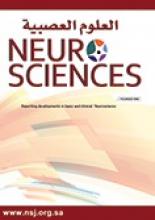Article Figures & Data
Tables
Disorder Symptom Stiff-person syndrome (SPS)15-21 Progressive rigidity of the truncal muscles, painful spasms and continuous motor activity and an exquisite sensitivity to external stimuli Continuous co-activation of agonist and antagonist muscles, particularly “core muscles” - paraspinal and abdominal muscles Rigidity and painful spasms of the lumbar paraspinal, abdominal, and occasionally proximal leg muscles associated with a lumbar hyperlordosis Classic SPS, which affects the lumbar, trunk, and proximal limb muscles SPS-plus syndrome, which consists of (a) the stiff-limb subtype, in which symptoms are limited to the lower limbs; (b) jerking stiff-man syndrome, characterized by chronically progressive stiffness and myoclonus; and (c) acute onset and progressive encephalomyelitis with rigidity and myoclonus Cerebellar ataxia38 Lack of voluntary coordination of muscle movements Epilepsy38 Seizures - violent shaking and loss of alertness Limbic encephalitis41,43,44 Short-term memory deficits, headache, irritability, sleep disturbance, delusions, hallucinations, agitation, seizures and psychosis Dancing eye syndrome40-45 Multivectorial eye movements, involuntary multifocal myoclonus, and cerebellar ataxia Miller Fisher syndrome48 Acute onset of external ophthalmoplegia, ataxia, mild limb weakness, ptosis, facial palsy, or bulbar palsy. Patients have reduced or absent sensory nerve action potentials and absent tibial Hoffmann’s reflex






